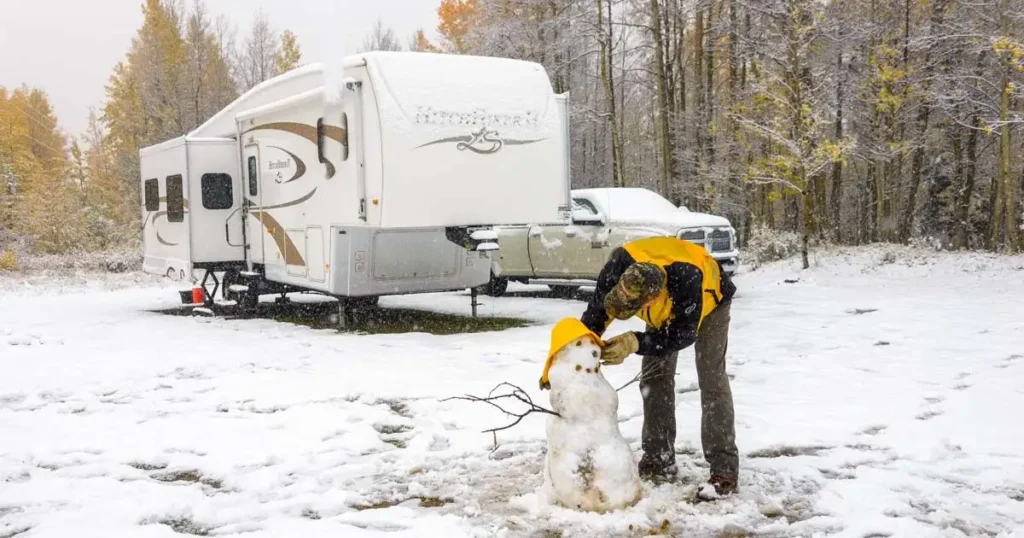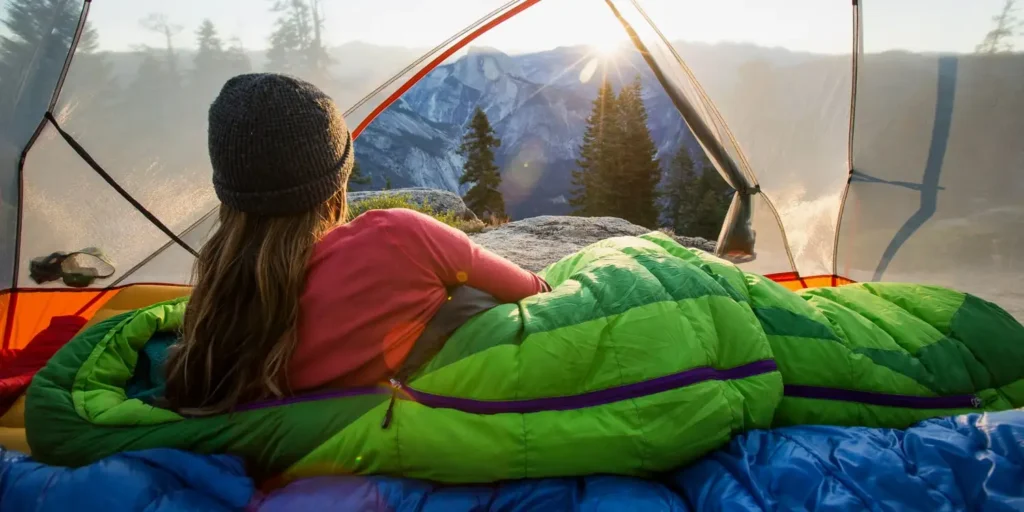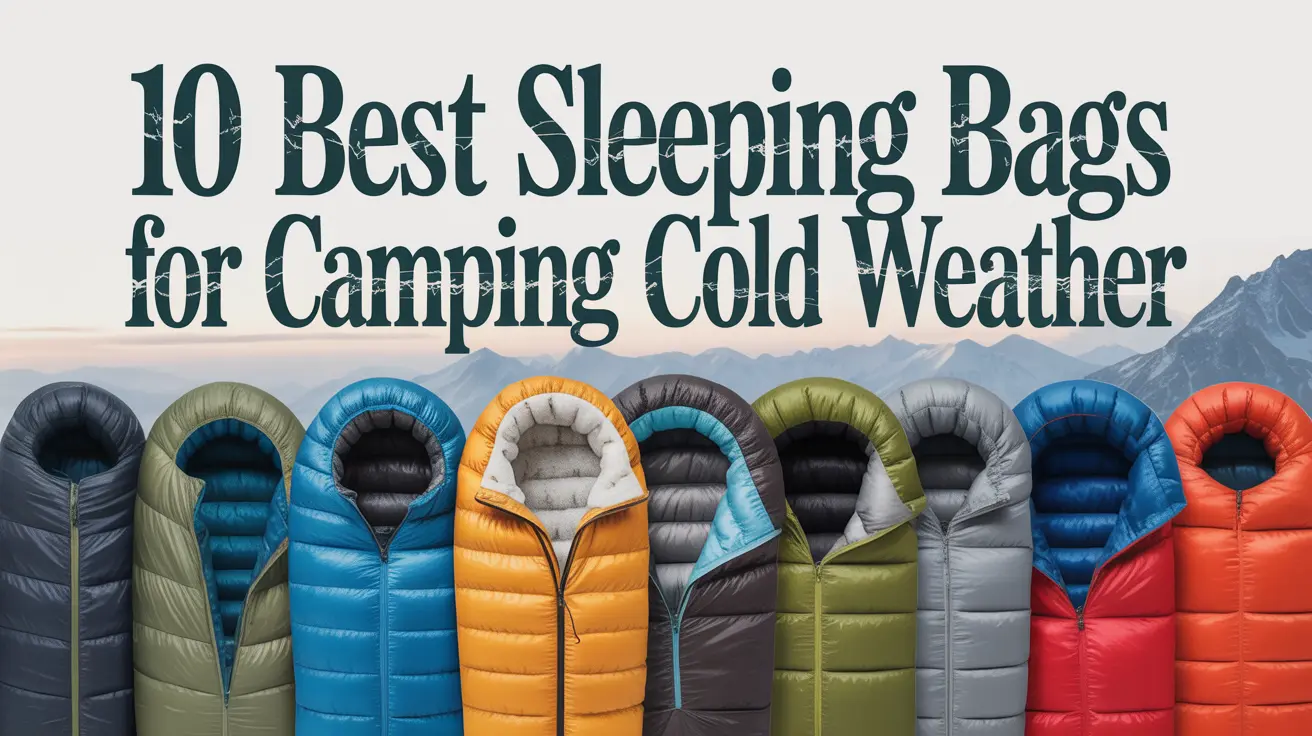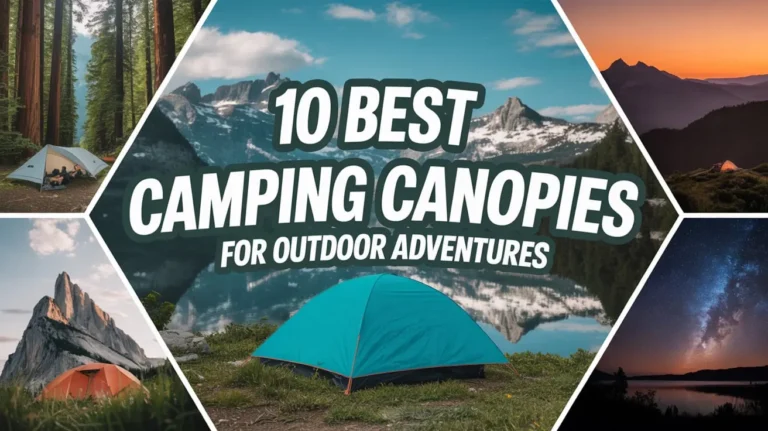10 Best Sleeping Bags for Camping Cold Weather
Camping in cold weather sounds romantic until you’re shivering at 3 a.m. wondering if your toes are still attached. A warm campfire fades fast. What you really need? The right sleeping bag. Not just something that says it’s warm, but something that actually keeps your body heat in when it feels like nature’s trying to freeze you out.
10 of the Best Sleeping Bags for Camping Cold Weather
This guide isn’t a generic shopping list. It’s more like… a walk-through. A way to figure out what features matter when your breath turns to frost and your sleeping pad feels more like a slab of ice.
From insulation types to the shape of the bag, from trusted brands like Mountain Hardwear and Western Mountaineering to those weird internal pockets you didn’t know you needed—we’re diving into all of it.
Section 1: Understanding Cold-Weather Camping Needs

1.1 Why Standard Sleeping Bags Won’t Work
Standard bags might handle cool nights in the spring. Maybe even a breezy fall evening. But when temperatures really dip—especially below freezing—those everyday bags hit their limits. The insulation compresses, cold spots creep in, and suddenly, it’s not just uncomfortable… it’s risky.
1.2 Risks of Inadequate Insulation in Extreme Cold
You probably already know hypothermia is a thing. But even before it gets to that point, a lack of proper insulation leads to poor sleep, muscle stiffness, and just feeling wrecked the next day. No one hikes well after a night of shivering. Your body needs warmth retention, not just a shell.
1.3 Key Benefits of Specialized Cold-Weather Sleeping Bags
These bags aren’t just warmer—they’re built with thoughtful features like cinchable collars, draft tubes, and heat-trapping baffles. They handle damp conditions better, especially when they use synthetic insulation that keeps working even when wet. Plus, many are shaped to hug your body—so there’s less space for cold air to linger.
Section 2: Core Criteria for Selection
2.1 Temperature Rating Systems Explained (EN/ISO Ratings)
Here’s where things get technical. Sleeping bags often have an EN or ISO temperature rating system. The “comfort” rating is usually the lowest temp at which the average person sleeps comfortably. There’s also a “limit” and “extreme” rating—those sound hardcore, but don’t rely on them unless you like testing your limits.
2.2 Insulation Types: Down vs. Synthetic
Down (especially 800-fill power or higher) has an excellent warmth-to-weight ratio. It’s super compressible, which helps with pack size. But… it loses warmth when wet unless it’s treated. Synthetic insulation, on the other hand, tends to hold up better in damp conditions and costs less. You won’t get quite the same loft, but for winter camping, it’s a solid choice.
2.3 Shape and Design: Mummy vs. Rectangular vs. Semi-Rectangular
Mummy bags are tighter, yes. But they trap heat far more efficiently. Rectangular bags offer more wiggle room—great for side sleepers or those who toss and turn. Semi-rectangular? A kind of compromise between weight and comfort.
2.4 Weight vs. Warmth Trade-Off
Lighter isn’t always better. Not when it’s freezing. Cold sleepers need bags with more insulation, even if that adds weight. But for winter backpacking trips, saving weight matters. So it’s about balance.
2.5 Packability and Storage Ease
If you’re backpacking, you’ll want something that compresses well. A compression sack can help, but insulation-filled material like synthetic tends to bulk up more than high-quality down.
2.6 Weatherproofing and Shell Materials
Look for a water-resistant shell—DWR (Durable Water Repellent) coatings help, especially near a frozen lake or in damp conditions. Also, internal baffling and draft collars help prevent heat loss through tiny gaps.
Section 3: Top 10 Cold-Weather Sleeping Bags Reviewed

When temperatures dip well below freezing, your sleeping bag isn’t just gear — it’s survival. Whether you’re tucked into an alpine bivy, riding out a snowstorm in a tent, or car camping in the frosty backwoods, having the right cold-weather sleeping bag makes all the difference.
We’ve tested and reviewed some of the best winter sleeping bags on the market — from ultralight down bags perfect for alpine backpacking, to roomy synthetic sleeping bags that handle damp conditions like a champ. Each pick below covers what works, what doesn’t, the best camping scenarios for it, and the price range — with a few personal notes from the trail. Let’s get into the warmest gear you’ll want when the world outside turns to ice.
3.1 REI Co-op Magma 15
Features: EN 15°F rating, 800-fill down insulation, shoulder draft tube, synthetic-lined hood, and compact packability.
Pros: Stellar warmth-to-weight ratio, minimalist yet functional design, great for serious winter treks.
Cons: Lacks a waterproof shell — not the best insulated sleeping bag for wet conditions.
Ideal Use: Cold-weather backpacking, sub-zero shelter use, minimalist alpine camping.
Price Range: Mid to high ($350–$450)
Story check-in: I once zipped into this on a wind-hammered ridge with fresh snow swirling outside. Despite the snowmelt dripping from the tarp roof, I stayed dry and toasty. Cozy cocoon vibes.
3.2 The North Face Inferno -20
Features: –20°F rating, 800-fill hydrophobic down, pintle collar, draft tubes, and a waterproof shell.
Pros: Built like a tank — delivers when the mercury vanishes. A trusted companion for extreme cold weather camping gear.
Cons: Hefty at 4.5 lb and not exactly wallet-friendly.
Ideal Use: Alpinists, subzero expeditions, high-altitude winter camping.
Price Range: High ($700+)
Flashback moment: Slipped hard on the ice while setting up camp. Got in late, freezing. Once zipped and cinched — instant silence, like the world froze outside that bag.
3.3 Mountain Hardwear Phantom 0°F
Features: 0°F rating, 800-fill down insulation, roomy mummy cut, and channeled warmth zones.
Pros: Packs impressively small, snug and efficient in dry cold.
Cons: The ultralight shell can suffer in damp environments.
Ideal Use: Cold-weather alpine bivouacs, dry snow conditions, lightweight backpacking.
Price Range: Mid to high ($450)
3.4 Marmot Trestles Elite Eco 0
Features: –5°F limit, synthetic EcoFill insulation, recycled shell materials, full-length zipper, roomy cut.
Pros: Reliable even when wet, great for side sleepers, and eco-conscious.
Cons: Bulky and heavier than down alternatives — not ideal for minimalist treks.
Ideal Use: Budget-friendly cold weather camping, damp climates, beginners looking for a synthetic sleeping bag.
Price Range: Mid ($200–$250)
3.5 Western Mountaineering Kodiak MF
Features: –20°F rating, 850-fill premium down, chest collar, full zipper draft tube, and water-resistant shell.
Pros: Insanely warm for its weight, precision fit, excellent craftsmanship.
Cons: Premium price tag and lacks footbox venting or adjustability.
Ideal Use: Mountaineering, multi-day alpine trips, extreme winter backpacking.
Price Range: Premium ($850+)
3.6 Therm-a-Rest Polar Ranger -20
Features: –20°F rating, synthetic fill, heat-pack pockets, mummy shape, full-length side zips.
Pros: Clever extras like heat-pack storage, solid entry-level winter sleeping bag.
Cons: Bulky for backpacking; best suited for car camping.
Ideal Use: Winter road trips, cold car camping setups, first-time cold-weather campers.
Price Range: Mid ($300)
3.7 NEMO Sonic 0 Sleeping Bag
Features: 0°F rating, 850-fill down insulation, spoon shape for comfort, full-length baffle.
Pros: Super roomy, ideal for side sleepers or those who toss and turn. Great hood design too.
Cons: Bulky and a bit heavier than sleek mummy-style bags.
Ideal Use: Cabin camping, base camp stays, or long trips where comfort trumps weight.
Price Range: High ($650)
3.8 Kelty Cosmic 0 Degree
Features: 0°F rating, 650-fill down, reliable hood, synthetic draft collar.
Pros: Excellent value — one of the most affordable down sleeping bags for cold nights.
Cons: Not very compact, and struggles in windy, exposed setups.
Ideal Use: Budget-friendly winter camping, casual backpacking in cold but not extreme conditions.
Price Range: Low to mid ($150–$200)
3.9 Big Agnes Lost Dog 0
Features: –5°F rating, 800-fill down blend, dual zippers, zippered hand warmer pockets, quilt-style hood.
Pros: Comfortable and full of practical extras, easy to get in/out of.
Cons: Slightly wide cut may feel drafty in deeper cold.
Ideal Use: Mild winter conditions, glamping-style cold camping, comfort-first setups.
Price Range: Mid ($400)
3.10 Feathered Friends Snowbunting EX 0
Features: –10°F rating, 900-fill down, water-resistant shell, high-loft construction, full insulation baffles.
Pros: Arguably the best winter sleeping bag in its class — ultrawarm yet efficient.
Cons: Expensive and slightly heavy for fast-moving alpinists.
Ideal Use: Serious alpine basecamps, multi-day expeditions, extreme cold.
Price Range: Premium ($800+)
Section 4: Specialized Recommendations
Not every winter camper’s the same — and not every sleeping bag should be either. Here are some tailored picks for different types of campers, each offering a unique edge in the cold.
- For Budget-Conscious Campers
Kelty Cosmic 0 Degree – If you need a reliable insulated sleeping bag without emptying your wallet, this one delivers. Solid warmth, decent packability, and a price that leaves room in your budget for other winter camping gear. - For Ultralight Backpackers
Feathered Friends Snowbunting EX – High fill power (900+), impressive thermal efficiency, and it compresses down smaller than you’d expect for such serious warmth. Ideal for minimalist alpine backpacking trips where every ounce matters. - For Extreme Expeditions
The North Face Inferno –20 – This is your fortress. Built for the worst cold imaginable, it’s a cold-weather sleeping bag with a no-nonsense design, a waterproof shell, and next-level insulation. If you’re facing subzero nights in exposed conditions, this bag doesn’t flinch. - For the Eco-Conscious Camper
Marmot Trestles Elite Eco 0 – Made with recycled synthetic insulation and a repurposed shell, this eco-friendly sleeping bag keeps you warm and reduces your environmental footprint. Great for wet weather too. - For Side Sleepers
NEMO Sonic 0 – With its spoon-shaped design, this bag actually lets you shift around. Finally, a side-sleeper sleeping bag that doesn’t feel like a straightjacket. Cozy, flexible, and still seriously warm.
Section 5: Expert Tips and Maintenance
You’ve got the bag — now here’s how to sleep warmer, extend its lifespan, and avoid rookie mistakes.
5.1 How to Maximize Warmth While Sleeping
Even the best cold-weather sleeping bag can’t fight physics. Layer smart.
- Use a high‑R-value sleeping pad to stop heat loss to the ground.
- Add a thermal liner — fleece or silk both work wonders.
- Wear dry socks and a light beanie. It’s surprising how much heat sneaks out of your feet and head.
5.2 Layering Techniques with Sleeping Bags
Think base layers, not bulky sweatshirts. Cotton holds moisture — bad idea in cold. Instead, wear a fitted thermal base layer made of wool or synthetic. It traps warmth inside your bag without creating cold spots.
5.3 Caring for and Washing Your Sleeping Bag
Don’t over-wash. Spot clean when possible. When it’s time for a full clean:
- Use a front-loader washing machine.
- Gentle soap only — Nikwax Down Wash or a tech cleaner.
- Dry low and slow. High heat wrecks down; synthetics tolerate it better but still don’t like it.
5.4 Proper Storage to Preserve Insulation
Don’t store your bag compressed in its stuff sack — that flattens the loft over time. Instead:
- Hang it in a closet or stash it in a large, breathable cotton storage sack.
- Avoid attic heat and damp basements — moisture and heat are enemies of long-term insulation performance.
5.5 When to Replace Your Sleeping Bag
How do you know it’s time to retire your trusty cocoon?
- Lost loft or warmth?
- Down clumps or slides around?
- Strong odors that stick after washing?
- Shell damage that can’t be patched?
If any of those hit home, especially with older synthetic sleeping bags, it might be time to upgrade. Down bags can last over a decade with care. Synthetics usually hold strong for about 5–7 years.
Section 6: Complementary Gear to Stay Warm

Even the best cold-weather sleeping bag needs backup. When you’re facing freezing temps, these extra layers of gear can be the difference between a warm night and one spent shivering.
Sleeping Pads with High R-Values
Start from the ground up — literally. Without solid insulation beneath you, heat just bleeds into the earth.
- Go for an R-value of 5 or higher when temps dip below freezing.
- The Therm-a-Rest Parsec (which we covered earlier) pairs beautifully with an insulated pad like the NeoAir XTherm.
- Bonus tip: Double up with a foam pad underneath to add even more insulation and reduce slipping.
Cold-Weather Tents and Shelter Enhancements
A great sleeping bag inside a drafty tent is like a fire in a wind tunnel — pointless.
- Look for four-season tents with low-profile designs that block wind.
- Vestibule add-ons give you a place to stash wet gear, keeping the interior dry.
- Some campers even use hot-rock radiators: heat a few large stones by the fire, then wrap and place them near (not inside!) your tent to radiate warmth for hours.
Thermal Liners and Warm Accessories
Think of these as insulation upgrades for your body and your bag.
- A thermal sleeping bag liner (fleece or silk) can bump warmth by 5–10°F — great for borderline nights.
- Don’t overlook the little things: insulated boot liners, warm mittens, neck gaiters, and hand-warmer pockets inside your bag or jacket can keep extremities from going numb.
- And yes, sleeping with tomorrow’s socks tucked inside your bag? Still genius.
Moisture Control Tools
Cold plus wet equals miserable. The real pros focus just as much on moisture management as they do on insulation.
- Vapor Barrier Liners (VBLs) can prevent your sweat from dampening your insulation — a lifesaver in frigid, dry environments.
- Always pack waterproof dry bags to protect clothing and gear from snowmelt and condensation.
- And seriously, don’t sleep with a damp base layer. You’ll regret it by 2 a.m.
Conclusion
Warmth in cold weather camping isn’t just a nice-to-have. It’s the difference between a soul-awakening dawn and a frozen regret. Choose a bag with purpose: the temp‑rating that suits your body, insulation that fits the weather, and weight you can carry.
Every bag I’ve mentioned brings something unique—comfort, warmth, packability, value—so pick what fits your style and climate. When you crawl into your bag next time under icy stars, you’ll feel it: that slow, cozy enveloping warmth that whispers, “This is exactly where I need to be.”
Frequently Asked Questions (FAQs)
Q1. What temperature rating should I choose for sub‑zero conditions?
If you fly cold, take a bag rated at least 10°F below the lowest nighttime temp you expect. So for –10°F nights, aim for –20°F. Better safe than frozen.
Q2. Is down or synthetic better for wet cold environments?
Synthetic tends to hold warmth when wet and dries ok. Treated-down is lighter and more compressible but needs better protection from moisture.
Q3. How do I know if a sleeping bag fits my body size?
Look for “regular” vs. “long” sizes, check shoulder and hip girth. A bag should be snug—too loose and it’s harder to warm up.
Q4. Can I use a cold‑weather sleeping bag in warmer conditions?
You can unzip it, use it as a quilt, or open it. But it’ll pack bigger/heavier than a bag made for milder weather.
Q5. Are there sleeping bags specifically designed for women?
Yes, many brands offer women’s cuts with narrower shoulders and wider hips, and warmer foot sections. Great fit can make a big difference.
Q6. What’s the benefit of a draft collar or draft tube?
They block heat from escaping around your neck and zipper—little features with big impact on warmth retention.
Q7. How important is the shell fabric’s water resistance?
Very. A damp shell reduces insulation performance. DWR coating or water-resistant shells help keep you dry and warm.
Q8. Should I choose a mummy bag or a wider bag?
If you’re focused on warmth and don’t mind less wiggle room, go mummy. If you want more space to toss or stretch, pick a spoon or semi-rectangular shape.
Q9. How often should I wash my cold‑weather bag?
Only when really needed. Every season if heavily used, otherwise a freshening spot clean. And loooow dryer heat only.
Q10. Can linings or liners improve warmth?
Definitely. Even a thin fleece or silk liner adds comfort and 5–10°F warmth. Plus, it keeps your bag cleaner longer.


